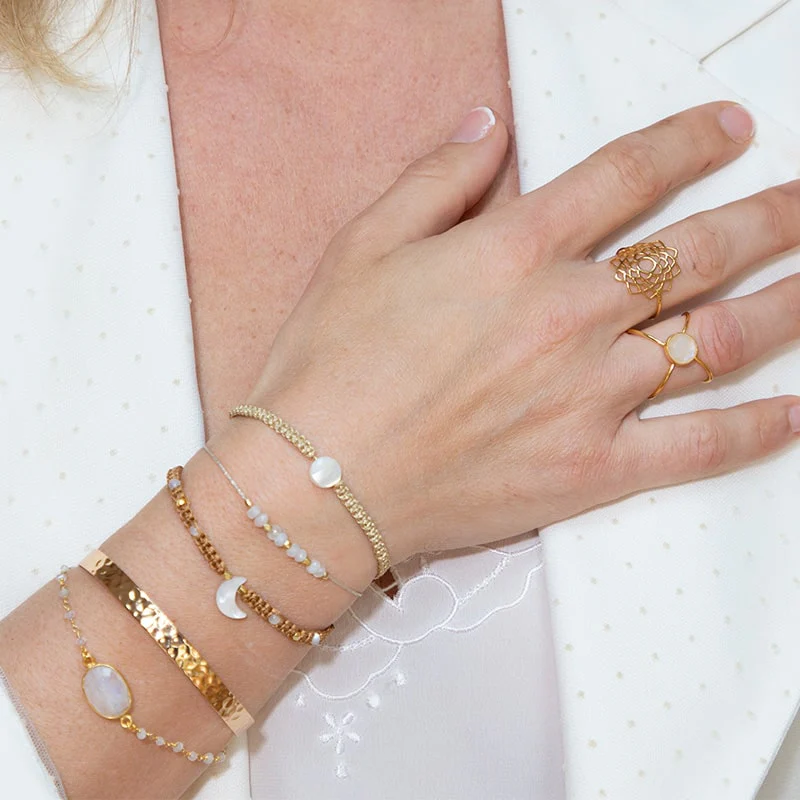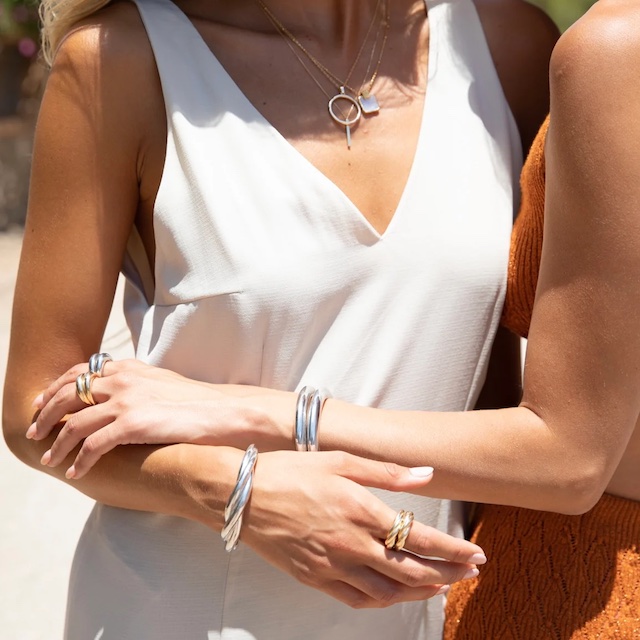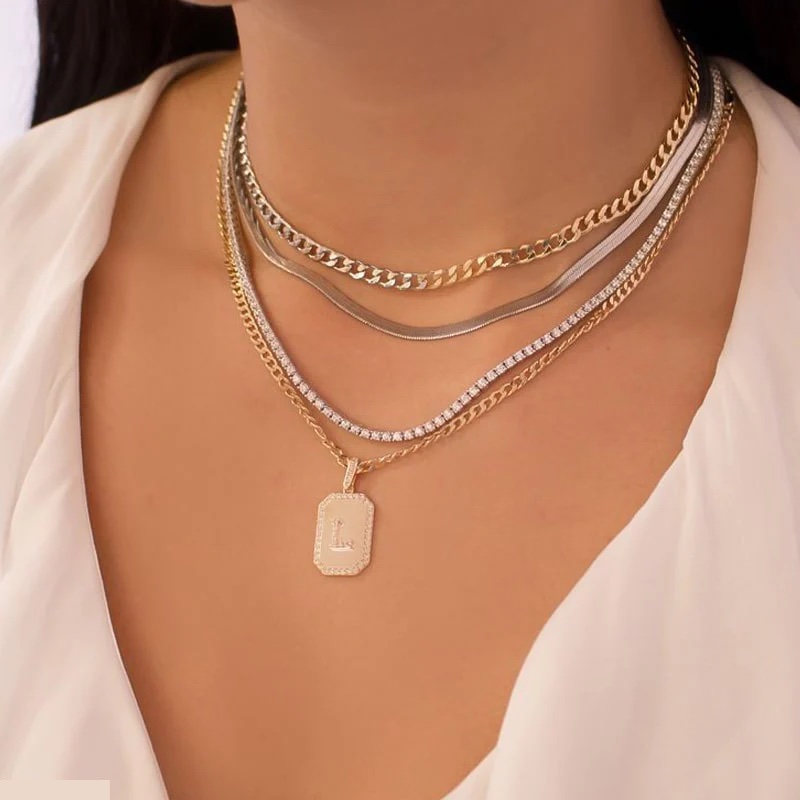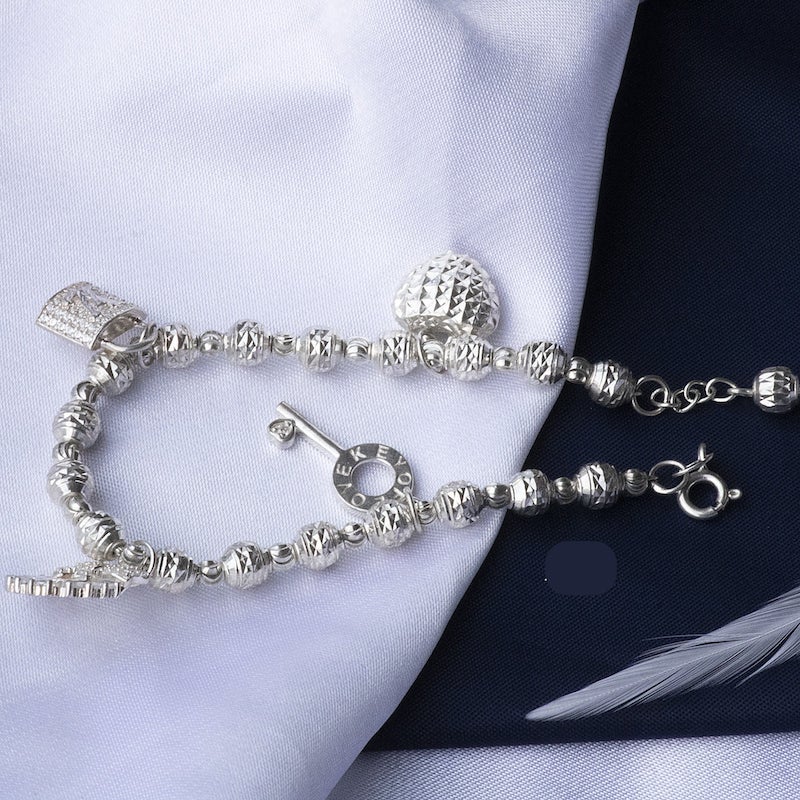Introduction to Precious Metals in Jewelry
Precious metals hold a timeless allure in the world of adornments. Gold and silver, in particular, are staples when it comes to fine jewelry. But what sets these two apart? In this section, we delve into the core of these coveted materials.
Gold jewelry has long been the symbol of wealth and prestige. Its lustrous glow adds a touch of elegance to any outfit. Gold is highly workable, allowing jewelers to craft intricate designs.
Silver jewelry, on the other hand, offers a sleek and modern appeal. It’s known for its brilliant white shine and offers an affordable option for those who appreciate fine jewelry. While more prone to tarnish, its reflective beauty is undeniable.
Both gold and silver have unique attributes that cater to different tastes and occasions. They hold a special place in the hearts of jewelry enthusiasts worldwide. Whether you opt for gold or silver jewelry, understanding their characteristics will help make a choice you’ll treasure.
When selecting between gold or silver jewelry, remember these metals are not just accessories. They are investments, heirlooms, and personal statements that express individual style and class. As we explore their history, properties, and role in fashion, keep in mind your own preferences and what you aim to express through your jewelry choices.
Historical Significance of Gold and Silver
Gold and silver, beyond their beauty, hold profound places in history. Through centuries, societies valued these metals, often linking them to gods, royalty, and power. Gold often adorned temples and was a staple in royal treasuries, signifying immense wealth and divine connection. Silver, used as currency, facilitated trade and elevated economies. It was also a symbol of purity and clarity. In many cultures, gold or silver jewelry represented social status, with intricate designs reserved for the elite.
Celebrated in myths and legends, these metals played parts in cultural narratives about prosperity and virtue. Kings and queens wore crowns and scepters crafted from gold, and warriors were awarded silver as a prize for valor. In religious texts, gold and silver are frequently mentioned, underpinning their otherworldly significance.
The historical importance of gold and silver informs their modern allure. Knowing their storied past can enrich the meaning of these treasures when we choose to wear gold or silver jewelry today. They carry the weight of history, making each piece not just an ornament, but a link to a rich tapestry of human heritage.
Physical Properties: Durability and Tarnish Resistance
When choosing between gold or silver jewelry, consider their physical properties. Durability and tarnish resistance are key factors.
Gold is renowned for its lasting quality. It does not corrode and maintains its shine without tarnishing. This makes gold an excellent choice for everyday wear and special occasions. Plus, it’s suitable for intricate designs since it resists wear and tear.
Silver, while also durable, is more prone to tarnishing. Over time, it may require polishing to restore its original luster. However, modern silver alloys, like sterling silver, have improved tarnish resistance.
Both gold and silver have melting points that withstand daily use. Yet, gold’s superior resistance to tarnishing gives it an edge in maintenance. Silver’s luster is brilliant, but it demands more care to keep its shine.
Remember, gold or silver jewelry is not just fashion. It’s an investment in quality that can last generations. Choose wisely based on how often you’ll wear the piece and how much care you’re willing to give.
Affordability and Investment Value
When choosing between gold or silver jewelry, consider affordability and investment value. Gold is generally pricier than silver. Its high value comes from its scarcity and widespread demand. This makes gold jewelry not just an adornment, but also a potential investment. Its price can appreciate over time, so buying gold could be financially beneficial in the long term.
Silver jewelry offers a more budget-friendly option. While it may not have the same prestige as gold, it allows for stylish pieces without a hefty price tag. Although silver prices are more volatile, they can still be an investment. Those who buy silver jewelry enjoy its lower entry price. It offers the chance to acquire more pieces or larger designs for the same cost as a small gold item.
Yet, when it comes to resale, gold often holds its value better than silver. This is due to its enduring demand and status as a luxury item. Silver does retain value, but it may fluctuate more with market changes.
With gold or silver jewelry, understanding market trends is key. Keep an eye on metal prices if you consider jewelry as an investment. Remember to factor in not just the current cost, but also future possibilities. Choose the metal that aligns with your budget and investment goals. Whether you invest in the bright shine of silver or the warm glow of gold, both can be wise choices that reflect your style and financial savvy.
Style and Versatility in Fashion
When it comes to fashion, both gold and silver jewelry offer unique style and versatility. Each metal can enhance different looks, making them staples in any wardrobe. Here we’ll look at how they fit in the world of fashion.
Gold jewelry stands out with its warm, classic aura. It goes well with formal attire and adds a luxurious touch to simple outfits. Gold chains, bracelets, and rings can elevate everyday wear too. Its timeless appeal makes it a favored choice for traditional events and celebrations.
Silver jewelry offers a modern and trendy twist. Its cool, bright tone pairs well with casual and contemporary styles. Silver accessories can complement office wear or casual weekend outfits. It’s popular with younger generations who love its hip and versatile flair.
In fashion, gold or silver jewelry can also be mixed to create dynamic looks. Wearing both can break fashion boundaries, showing creativity and confidence. Just remember to balance them well to maintain elegance.
Whether you prefer the regal touch of gold or the sleek look of silver, both metals can adapt to various fashion statements. Their ability to blend with different colors and styles makes gold or silver jewelry a smart choice for any fashion-conscious individual.
Skin Tone and Color Matching
When selecting gold or silver jewelry, consider the color of your skin tone. Certain metals complement different complexions beautifully, making this a key factor in your decision.
For warm skin tones that have a yellow, peachy, or golden undertone, gold jewelry often matches best. It highlights the natural warmth of the skin, creating an elegant and cohesive look. Gold’s rich hue enhances the depth of warmer complexions.
Conversely, if you have a cool skin tone with pink or blue undertones, silver jewelry might be the better choice. Its bright, white sheen contrasts strikingly with cool-toned skin, offering a fresh and radiant appeal. Silver can give a luminous effect to those with paler skin.
Those with a neutral skin tone, combining elements of both warm and cool, have the flexibility to wear both metals effectively. They can easily switch between gold or silver jewelry, depending on the occasion or outfit.
When it comes to color matching, consider your typical clothing colors as well. Gold brings warmth to earth tones and darker colors, while silver pairs well with monochromes and vibrant shades. Remember to think about the color of your wardrobe when picking out your jewelry.
Ultimately, whether you choose gold or silver jewelry based on your skin tone, make sure it makes you feel confident and stylish. Your personal preference should always play a role in your jewelry choices, and both gold and silver can be the right choice depending on the context and your personal style.
Maintenance and Care for Gold and Silver Jewelry
When investing in either gold or silver jewelry, maintenance and care are crucial for longevity. Both types require different approaches to keep them looking their best.
For gold jewelry, the maintenance routine is fairly simple. This metal does not tarnish and is not as susceptible to scratches. Regular cleaning with a soft cloth can keep it shiny. Soapy water and a soft brush can be used for a deeper clean. Just remember to dry it thoroughly after cleaning.
Silver jewelry needs more attention due to tarnishing. A silver-specific cleaner or a homemade paste of baking soda and water can do the trick. Use it gently with a cloth or sponge, then rinse and dry well to prevent water spots. It’s also wise to store silver in a moisture-free environment, like a jewelry box with anti-tarnish strips. This can help delay tarnishing significantly.
For both gold and silver, it’s best to remove jewelry during physical activities. Chemicals like chlorine and substances in lotions or perfumes can harm the metals. Also, make sure to put on your jewelry after applying makeup or hair products to avoid residue build-up.
Regular check-ups with a jeweler can prevent problems like loose settings or clasps. Professional cleaning occasionally can also restore the jewelry’s original luster. By following these maintenance tips for your gold or silver jewelry, you can ensure that your pieces remain beautiful and valuable for years to come.
Environmental Impact and Ethical Considerations
When you choose gold or silver jewelry, the environment and ethical factors matter too. Producing these metals can harm nature. Gold mining often leads to water pollution and habitat destruction. It uses much cyanide and mercury, which are toxic. Silver mining also impacts the land and can pollute water sources. The process requires large amounts of energy and water, putting a strain on resources.
Both gold and silver can come from conflict regions. In these places, mining might fund wars or involve poor worker conditions. It’s vital to think about these issues when purchasing jewelry.
Look for jewelry from sources that value eco-friendly practices. Some brands reclaim gold or silver from used electronics. This recycling reduces the need for new mining. Others support fair trade and ethical mining operations. These ensure workers’ rights and community welfare.
Certifications can guide you too. Look for marks like Fairtrade Gold or the Responsible Jewellery Council. These signs mean the jewelry meets specific ethical standards.
By choosing responsible gold or silver jewelry, you make a positive impact. You support better practices in the industry. And, you invest in pieces that align with your values. Keep these factors in mind to make a choice you can feel good about.
Conclusion: How to Choose Between Gold and Silver
When making your choice between gold or silver jewelry, think about your needs, style, and values. Remember, gold shines with prestige and tends to hold value well. It’s a classic choice that suits warm skin tones and works for both casual wear and grand events. Gold is simple to care for, lasting through time without tarnish.
Silver, on the other hand, is more affordable and offers a modern look. It’s great for cool skin tones and adds a bright touch to any outfit. However, keep in mind that silver requires more upkeep to prevent tarnish and maintain its shine.
Consider your budget, the amount of maintenance you’re ready to commit to, and the statement you want to make. Think about the environmental and ethical implications of your purchase, seeking out responsible sources when possible.
Your perfect piece of jewelry should resonate with your personal style, complement your skin tone, meet your budget, be manageable to care for, and align with your ethical standards. Whether you choose the timeless elegance of gold or the sleek charm of silver, your selection is a reflection of your unique taste and values.
Tags: gold or silver jewelry, individual style, intricate designs, timeless allure


